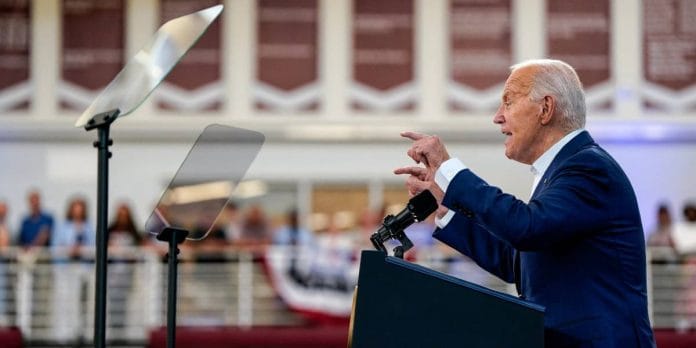New Delhi: Joe Biden’s withdrawal from the US presidential race, months before the election scheduled for 5 November, is rare but not unprecedented. Seven sitting US presidents in the country’s nearly 300-year history have been forced to drop out amid a lack of public or party support.
In 1844, John Tyler became the first sitting US president to be forced out of a presidential race. He was also the first vice president in US history to take over from an incumbent President mid-term. He lost the support of his party, the Whigs, within a year of taking office after the death of President William Henry Harrison.
Tyler vetoed bills seeking the establishment of a national bank, leading nearly all his cabinet members to resign, making him a “president without a party” (the title of an academic biography of Tyler by Christopher Leahy). He sought re-election in 1844, but without Whig or Democratic support, he withdrew from the race in August that year. Incidentally, his successor, James K. Polk, a Whig, did not run for second term for health reasons.
Similarly, vice president Millard Fillmore came to power in 1850 after the death of the president, Zachary Taylor, who had just assumed office a year before. Fillmore’s story was notable as he went from being an apprentice to a wool carder to being admitted to the bar. In 1952, he was one of three Whig candidates in, but was not chosen by the convention. He ran again in 1856, but lost the election.
Also read: How concerns over Biden’s age snowballed, left him isolated with flagging campaign & led to his exit
Pierce not renominated
Franklin Pierce was the first sitting president to complete a full term but not be renominated by the party. Five months before the election in 1856, he was unable to secure the support of the Democratic Convention in Ohio, and hence, he dropped out of the presidential race. The party’s nominee, James Buchanan, won the November election and served one term as president.
Andrew Johnson, the 17th US president between 1865 and 1869, was an unexpected entrant in the White House because he was first chosen as Abraham Lincoln’s running mate in 1864 and succeeded him after his assassination in 1865. Johnson — a southern Democrat who became the Republican Lincoln’s running mate as part of the National Unity Party, the Civil War-era coalition — was, however impeached by the Republican-dominated Congress in 1868 and failed to garner support from the Democrats as well, forcing him to step down from the race.
In 1884, vice president Chester A. Arthur was elevated to the top job after the assassination of James A. Garfield. The son of a Baptist preacher from Ireland, Arthur’s signing of the Pendleton Civil Service Act — a landmark law mandating that certain federal government jobs be distributed based on merit rather than political connections — and his call for fewer employees in government departments made him unpopular among fellow party men, who then denied him the opportunity to run for president again.
Harry Truman took charge as president after the death of Franklin Roosevelt in 1945, and, after serving for the remainder of Roosevelt’s term and another full term, he sought re-election in 1952. However, with his approval ratings having plunged amid the Korean War, the Democrat announced that he would not run again.
Johnson latest on the list
Before Biden, Lyndon Johnson was the last sitting presidents to withdraw just a few months before the elections. Johnson was the country’s 36th president and suffered considerably as his popularity fell amid the Vietnam War.
He had inherited the top job after John F. Kennedy was assassinated in 1963. After winning a full term in 1964, he was the top candidate for the 1968 election. However, his approval ratings had fallen sharply and he was only able to win the primary in New Hampshire against anti-war senator Eugene McCarthy from Minnesota by a small margin, after which he announced that he would not seek re-election.
While seven US presidents dropped out after entering the race, two others — Rutherford B. Hayes (1877-1881) and Calvin Coolidge (1923-1929) — did not seek re-election as they believed one term to be enough for an individual to serve. Until 1951, an individual eyeing the president’s post could legally contest as many times as they wished — although informally, most except FDR stuck to the two-term precedent set by George Washington — until the Twenty-Second Amendment officially restricted them to two terms.
(Edited by Sanya Mathur)
Also read: Former Trump critic & now his running mate, Indian American Hindu wife — who is JD Vance






